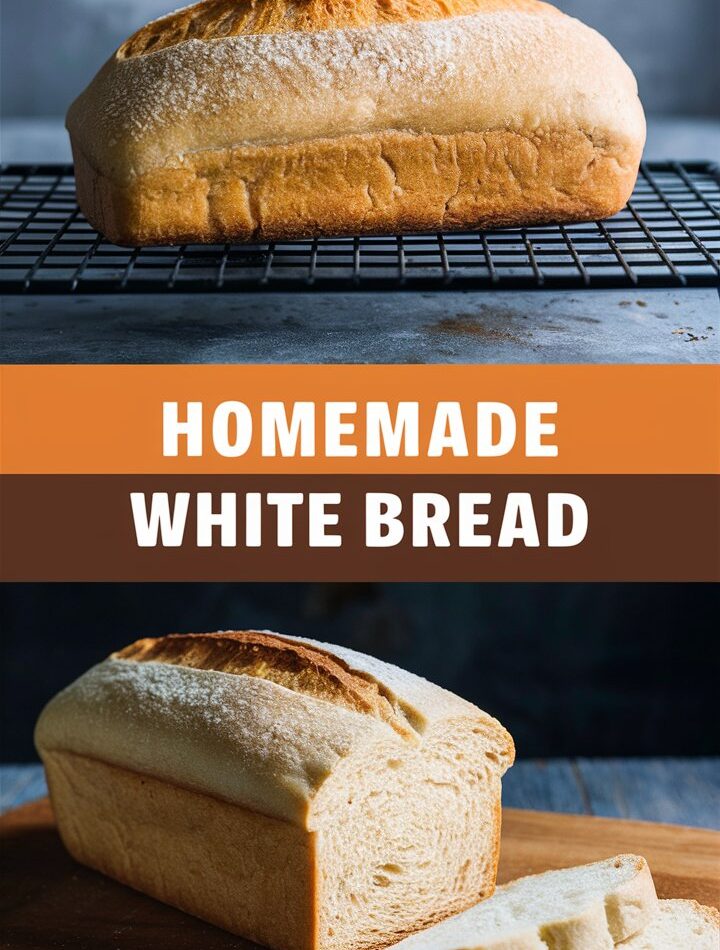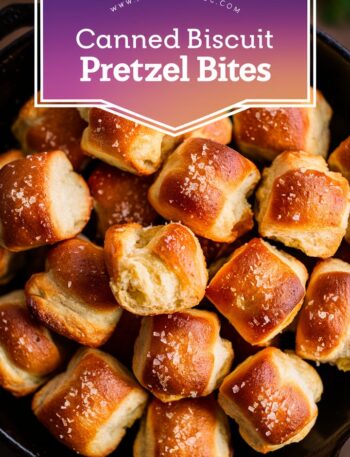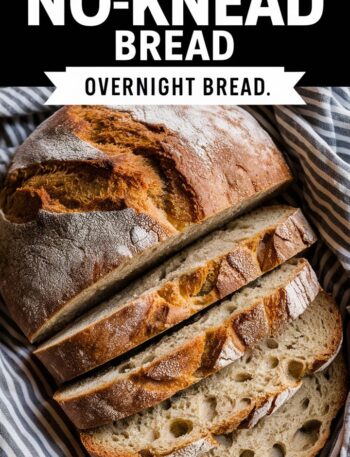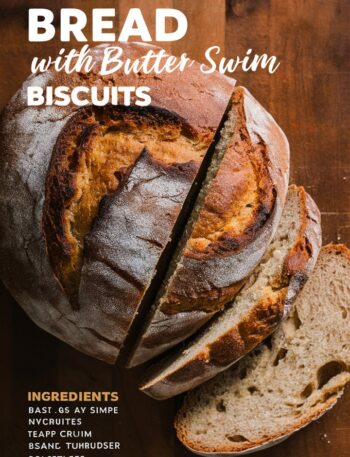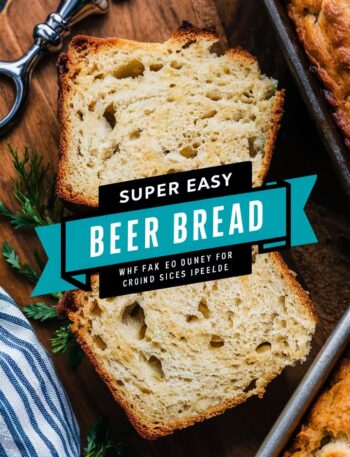In a world full of pre-packaged, processed bread options, why bother making your own?
The answer is simple: flavor, freshness, and fulfillment. Store-bought loaves can never compete with the warm, aromatic joy of bread pulled fresh from your oven. The crispy crust, soft crumb, and heavenly scent deliver an experience that no plastic-wrapped loaf ever could.
Making bread at home also gives you full control—over ingredients, taste, and texture. No preservatives, no unpronounceable chemicals—just real food, made by you.
💡 2. Key Benefits of Baking Your Own Bread
Let’s look at the powerful reasons more people are choosing to bake their own white bread at home:
- ✅ No artificial preservatives or additives
- ✅ You choose the ingredients (organic, whole wheat, gluten-free options)
- ✅ Budget-friendly – One loaf costs less than a dollar to make
- ✅ Therapeutic and satisfying – Kneading dough is like baking therapy
- ✅ Better taste and texture
- ✅ Customizable – Add herbs, seeds, cheese, or garlic
- ✅ Freshness – Homemade bread lasts longer and tastes better
🛠️ 3. Kitchen Tools You’ll Need
Good news—you don’t need a bakery setup or fancy equipment. Here’s all you need:
- Large mixing bowl
- Wooden spoon or dough whisk
- Measuring cups and spoons
- Kitchen towel or plastic wrap
- Loaf pans (standard 8.5” x 4.5”)
- Oven (with optional thermometer)
- Wire cooling rack
💡 Optional: Stand mixer with dough hook—but this recipe works beautifully without it.
🧂 4. Ingredients – What You Really Need (and Why)
These ingredients are pantry staples, but every single one plays an important role.
| Ingredient | Purpose |
|---|---|
| Warm Water (2¼ cups) | Activates the yeast. Should be around 110°F (not hot!). |
| Sugar (2 tbsp) | Feeds the yeast for a strong rise and enhances flavor. |
| Active Dry Yeast (1 tbsp) | The leavening agent that helps the dough rise. |
| Salt (1 tbsp) | Adds flavor and strengthens dough structure. |
| Vegetable Oil (2 tbsp) | Keeps bread soft and moist. Can sub with melted butter. |
| All-Purpose Flour (6 cups) | The main structure. Add gradually to get perfect texture. |
💬 Optional Add-ins: Try 1 tsp of garlic powder, rosemary, or cheese for flavor variations.
🥖 5. Step-by-Step: How to Make White Bread from Scratch
Here’s a beginner-friendly breakdown that results in fluffy, golden loaves every time:
🔹 Step 1: Activate the Yeast
In a large bowl, mix warm water, sugar, and yeast. Let it sit for 5–10 minutes until frothy. This means your yeast is alive and ready.
🔹 Step 2: Build the Dough
Add the salt, oil, and 3 cups of flour to the mixture. Stir until well combined. Then add the rest of the flour slowly—1 cup at a time—until the dough starts to pull away from the bowl.
🔹 Step 3: Knead
Turn the dough onto a lightly floured surface. Knead for 8–10 minutes until the dough is smooth, springy, and elastic. It should not stick to your hands.
🔹 Step 4: First Rise
Place the dough in a greased bowl and cover it with a clean kitchen towel. Let it rise in a warm place for 60–90 minutes or until doubled in size.
🔹 Step 5: Shape the Loaves
Punch down the dough gently. Divide into two equal parts. Shape into loaves and place in greased loaf pans.
🔹 Step 6: Second Rise
Cover pans loosely and let loaves rise for 30–45 minutes until just above the pan’s edge.
🔹 Step 7: Bake
Bake at 375°F (190°C) for 30–35 minutes until golden brown. Tap the top—if it sounds hollow, it’s done.
🔹 Step 8: Cool and Enjoy
Let loaves cool for at least 30 minutes on a wire rack before slicing (if you can wait!).
🧠 6. Expert Baking Tips for Perfect Results
- Use fresh yeast: Old yeast = no rise.
- Don’t over-flour: Dough should feel tacky, not dry or crumbly.
- Warm environment: Let it rise in a slightly warm oven (turned off) if your kitchen is cold.
- Brush with butter after baking: Gives a soft, shiny crust.
- Use a thermometer: Fully baked bread has an internal temp of 190°F–200°F.
❌ 7. Common Mistakes to Avoid
- Water too hot or cold: Kills or weakens yeast.
- Too much flour: Makes bread dry and dense.
- Under-kneading: Leads to weak structure and poor rise.
- Skipping second rise: Essential for final texture and crumb.
- Cutting too soon: Steam escapes too quickly, ruining texture.
🧊 8. How to Store and Keep Bread Fresh Longer
- At Room Temperature: Store in a bread box or airtight bag for 3–4 days.
- For Longer Use: Slice, wrap, and freeze. Toast from frozen—no thawing needed.
- Avoid the Fridge: It makes bread stale faster due to moisture loss.
🎨 9. Variations: Make It Your Own
Want to get creative? Try these easy white bread variations:
| Variation | How to Do It |
|---|---|
| Honey White Bread | Swap sugar for honey and add 1 extra tbsp of oil |
| Cheese Bread | Mix in ½ cup shredded cheese before final shaping |
| Garlic Herb Bread | Add 1 tsp garlic powder + 1 tbsp dried herbs |
| Whole Wheat White | Replace 2 cups of white flour with whole wheat |
| Milk Bread | Replace water with warm milk for a richer loaf |
❓ 10. FAQs – All Your White Bread Questions, Answered
Q1. Can I use instant yeast instead of active dry?
Yes! Use the same amount and skip the activation step—just mix everything together.
Q2. What if I don’t have loaf pans?
Shape into round boules and bake on a sheet pan. You can also use muffin tins for mini-loaves!
Q3. How can I make the crust softer?
Brush the loaves with melted butter right after baking.
Q4. Can I knead the dough in a mixer?
Absolutely. Use the dough hook on medium speed for 6–7 minutes.
Q5. How do I know my bread is fully baked?
It should sound hollow when tapped and be golden brown on top. Internal temp: 190°F–200°F.
🧾 11. Nutrition Information (Per Slice, 1/16 of a Loaf)
| Nutrient | Amount |
|---|---|
| Calories | 150 |
| Carbohydrates | 27g |
| Protein | 4g |
| Fat | 2g |
| Fiber | 1g |
| Sugar | 1g |
| Sodium | 230mg |
Note: Nutrition may vary based on flour brand and additional ingredients.
🏁 12. Final Thoughts
Baking white bread at home isn’t just a kitchen skill—it’s a form of self-care, a return to simplicity, and a rewarding creative process. This easy, forgiving recipe offers more than just a loaf—it gives you pride, warmth, and something worth sharing (or hiding for yourself—we won’t tell!).
Whether you’re making it for Sunday breakfast, weekly sandwiches, or your first homemade loaf ever—this guide ensures you’ll bake bread that’s better than store-bought in every way.
